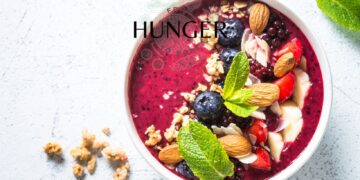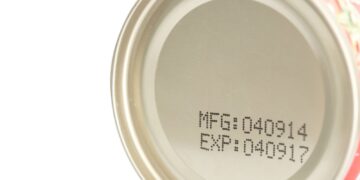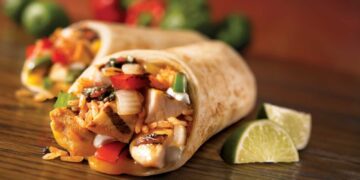When working with materials that could come into contact with food, it is important to ensure they are safe and fit for human consumption. Numerous types of sealant products and formulations exist which allow workers to create flexible and durable seals, but not all of them are food-safe. Knowing the regulations behind food-safe sealants is vital if you’re working with food and beverage containers or surfaces.
In order to be certified as food-safe, the sealant must meet a number of requirements. All sealants should be approved for use in a food processing environment as determined by the FDA or similar governing body. The materials from which the sealant is composed must be safe for use in direct contact with foods, including edible oils or other liquids used in production processes. The ingredients used should also conform to strict regulations set out by various health agencies as well as environmental standards organizations. Any solvents employed in their formulation must also have been approved as suitable for these types of applications before they can be considered food-safe sealants.
Types of Sealants
When looking for a sealant that is food safe, there are a few different types you can consider. Some of the most popular options are silicone,food grade waxes, and food safe epoxies. Each type of sealant has its own unique benefits and drawbacks, so let’s take a closer look at the various types of sealants available on the market.
Silicone
Silicone is a synthetic material often used in food-safe applications due to its resistance to heat, steam, cold and oxidation. It can be found in a range of colors and formulations including adhesives, sealants and grease. Silicone offers good flexibility which allows for an improved fit when used for formed seals against curved or uneven surfaces. When applied properly it delivers excellent water protection, insulation and imperviousness to oils; however it does not bond well to some common substrates such as porous concrete. Due to their low toxicity levels silicone products are safe for use in the food industry, providing considerable benefits such as resistance to microbial growth (ideal for chemical processing sites) and good temperature stability of up to +302°F (+150°C). Popular uses within food industry settings include sealing spaces between surfaces that are deliberately designed with large gaps or narrow channels (such as when reconfiguring shelves or creating additional ventilation panels). Silicone sealants also provide good protection against chemicals which could prematurely embrittle or discolor other systems, making them ideal for a variety of environments such as refineries and kitchens where coming into contact with harsh liquids is unavoidable.
Acrylic
Acrylic sealants are a type of water-based sealant, designed to be used on materials like wood, plastic, glass and metal. They form a durable, flexible protective barrier and usually dry clear, giving them a wide variety of applications around the home. Acrylic sealants are food-safe when cured and provide an effective barrier against moisture, dust, chemicals and other contaminants.
Acrylic sealants form an airtight bond that can protect the sealed surface from heat and cold temperatures so they’re suitable for anything from sealing kitchen floors to bathtubs. Many acrylic formulas are also paintable so they can be matched to virtually any color scheme or wall coverings you may have at home.
When choosing an acrylic sealant for use in food preparation areas or serving ware items, it’s best to look for products that are certified food safe. Most DIY stores stock a range of food-safe acrylic sealants in tubes or cans specifically designed for use with kitchen surfaces or cooking equipment such as plastic containers. Make sure that you read the label carefully before you start using it as not all types may be suitable for your particular project requirement.
Polyurethane
Polyurethane is a type of sealant that is commonly used for both commercial and residential applications and is typically odorless, colorless, and food safe. It has excellent water resistance properties and can remain flexible even when applied in thin layers. Polyurethane also provides superior clarity to other types of sealants, making it an ideal choice for woodworking projects where an invisible sealant is preferred. When applied, polyurethane forms a protective layer over the surface it was applied to that prevents the exposure of wood to moisture, preventing damage due to mold, mildew and insects. Polyurethane also enhances the natural beauty of the wood by providing a glossy finish that helps bring out its underlying grain pattern while maintaining its natural color.
Polyvinyl Acetate (PVA)
Polyvinyl acetate (PVA) is a fast drying, odorless, very versatile and non-toxic adhesive. It is commonly known as white glue or carpenters glue and is suitable for use in food contact applications. PVA sealants form a very thin, flexible coating on corks, wood surfaces or concrete, preventing them from drying out or becoming brittle. They can also be used to seal air bubbles and small cracks in food contact surfaces.
It has excellent adhesion and flexibility properties, making it the perfect choice for sealing porous surfaces such as concrete or cork and any other material that requires a thin coating of adhesive to provide protection against moisture absorption. PVA sealants are relatively simple to apply with a brush or spray gun and they provide an effective barrier against water damage. Additionally, they are food grade compliant giving you peace of mind that your food contact surface will remain sealed safely away from any unwanted contaminants.
Food Safe Sealants
Finding a food safe sealant is essential to ensure you have a hygienic and safe environment when handling food products. There are many types of sealants available on the market but not all are food grade. To help you find the best sealant for your application, let’s take a look at the pros and cons of different food safe sealants.
Silicone
Silicone is a popular sealant choice for food safe applications. It’s non-toxic, easy to apply, and has a long shelf life. It also offers unparalleled flexibility and can be used in extreme temperatures, making it the ideal choice for many different projects — from sealing countertops and creating watertight seals to repairing raw material containers. Silicone is usually flexible and low in odor, so it won’t interfere with the smells or flavors of food materials. In addition, silicone doesn’t degrade during normal use or over time.
When searching for a silicone product, look for an FDA-approved sealant that you can trust in your kitchen. While most brands will indicate on their labels if their product is food-safe compliant, you should always check with the manufacturer if you’re uncertain or have additional questions. When applying the sealant, make sure to clean your surfaces first according to product instructions prior to application in order to ensure optimum adhesion and drying times as well as a safe final product that won’t come into contact with food items later on down the line.
Acrylic
Acrylic sealants are popular food-safe options for sealant applications. They are often used as an adhesive or caulk in many types of food processing, including packaging and preparation. Usually, acrylic sealants have a chemical curing process that forms a durable, flexible and long-lasting bond on various surfaces. It is a reliable option for all low shrinkage needs when temperatures are between 40 to 100 degrees Fahrenheit (4 to 38 degree Celsius). Many acrylic sealant products have been certified as non-toxic by international standards, making them safe for use in areas where there’s direct food contact. Furthermore, acrylic sealants are created to be cleanable with non-woven wiping cloths specifically designed to work with these substances without producing hazardous residues or toxic chemicals.
Polyurethane
Polyurethane is a type of plastic sealant commonly used to seal porous surfaces like wood or concrete that need to come in contact with food. It can be used outdoors or indoors and is available in both water- and solvent-based varieties. In general, polyurethane sealants have excellent adhesion, can withstand temperature changes, have superior moisture resistance and are very durable.
The Food and Drug Administration has approved most water-based polyurethanes for indirect contact with food, so they are ideal for sealing counters, kitchen tables, cutting boards and other kitchen surfaces where foods are prepared. The FDA has also recognized solvent-based polyurethanes as safe for use when cured correctly, but these types of sealants may not create food-safe surfaces if not cured properly.
Before using a polyurethane sealant to create a food-safe surface like countertops or cutting boards make sure you read the manufacturer’s instructions carefully and follow all safety precautions. Be sure you choose an approved food-grade version of the product (check the label), apply as directed and allow it to cure completely before use. Also be aware that some types of solvent based polyurethanes may not be considered safe for use with foods past their curing time; check with your supplier before using them on any food surface application.
Polyvinyl Acetate (PVA)
Polyvinyl Acetate (PVA) is a water-based, food safe sealant that is used extensively in food packaging and container construction. It is one of the most versatile sealants available on the market and provides a strong bond with minimal disruption to existing structures. PVA is also used to coat baking sheets, create cookie cutters and molds, and waterproof fabrics. Unlike many other types of sealants, it does not contain any y erable components or heavy metals. This makes it an excellent choice for sealing any items that come into contact with foods such as jars, cans, pans, dishes and utensils. Additionally, PVA sealant does not require any special tools or protective clothing for application; simply use a craft knife or scissors to apply it directly to surfaces or items being sealed.













